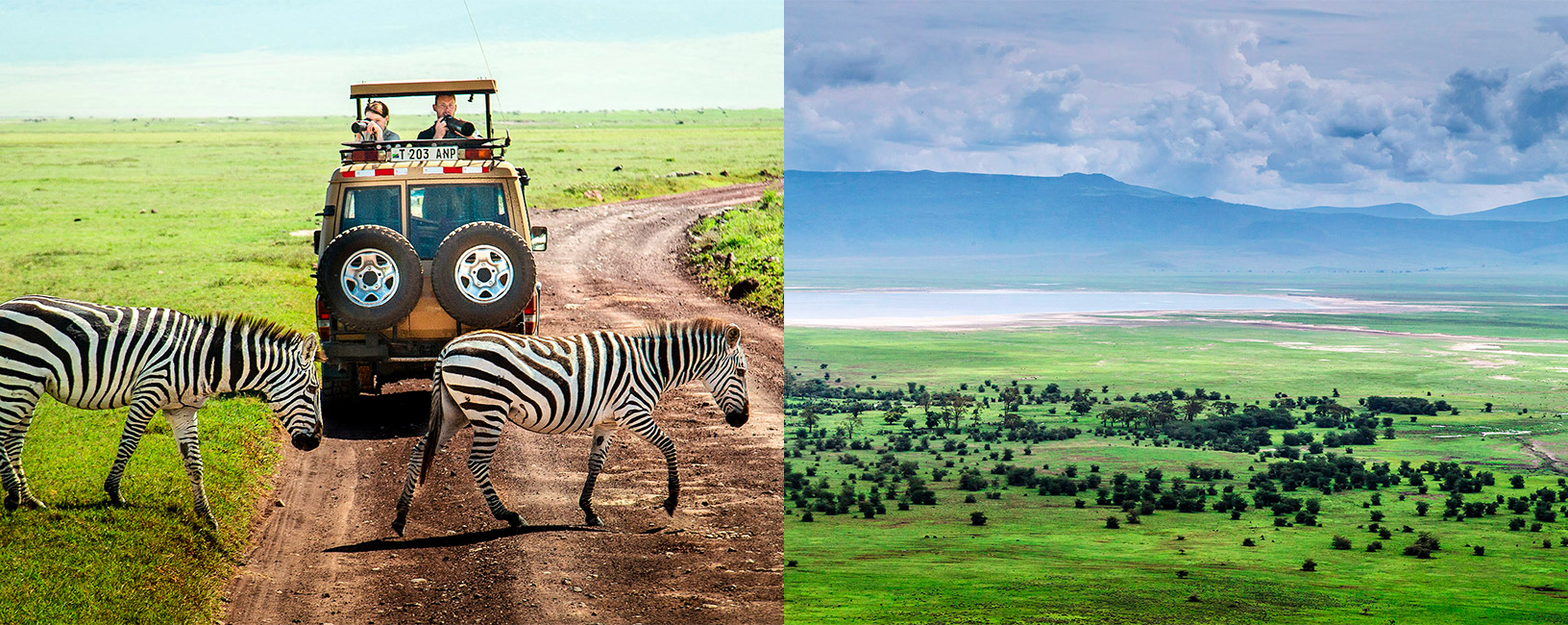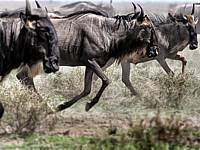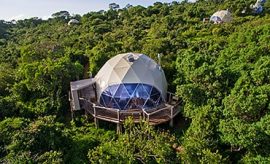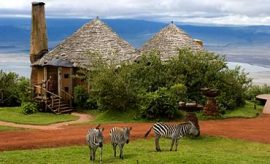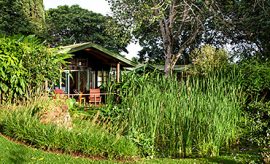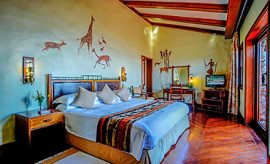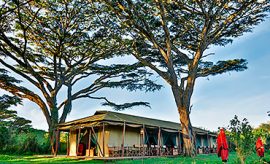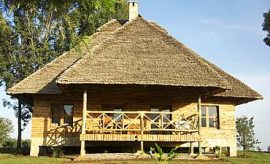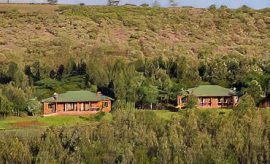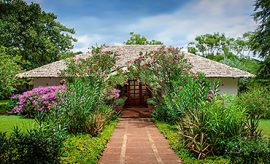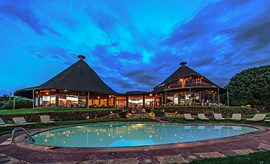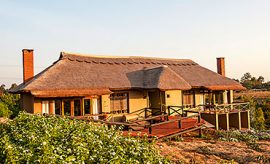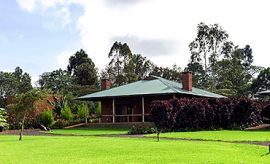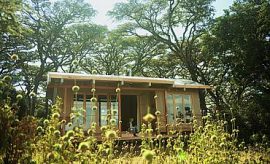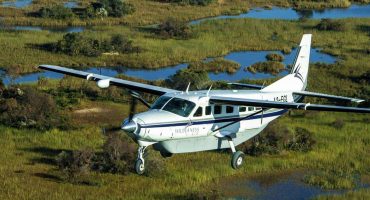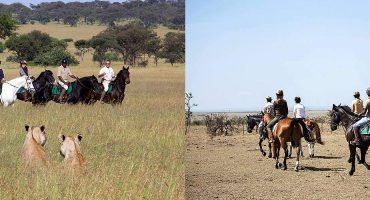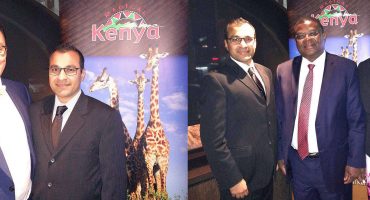GUIDE ON CRATER GEOLOGY & WILDLIFE IN NGORONGORO
The reason it has become a UNESCO World Heritage site, is that the caldera rim remained whole, but the cauldron did not flood, thereby producing an ideal environment for a diverse African wildlife world in miniature where thousands of animals co-exist in ecological harmony in a varied landscape of savannah, marsh, lake, salt pan, forest and escarpment, with enough food and water to sustain them year-round.
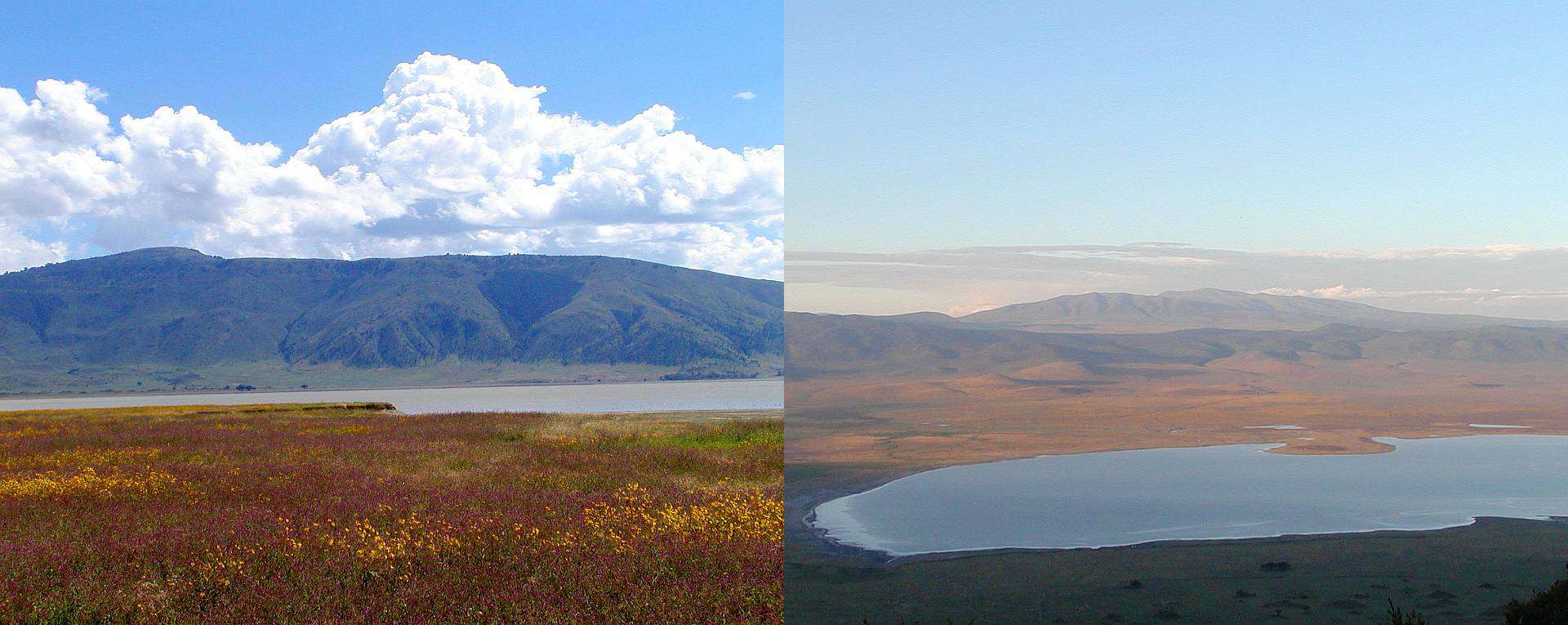
Tens of thousands year of ungulates swarm on the plains, mainly white-bearded wildebeests, zebras, and Thomson’s gazelles, with increasing numbers of herbivores such as the Cape buffalo, elephants, all sustained by lush grasses fed by the historic volcanic ash. Their sheer numbers ensure that the majority survive. Hundreds of predators, like the six prides of distinctively inbred black-maned lions, numbers of solitary leopard, speedy cheetahs and spotted hyena clans thrive on the less fortunate. Carrion eaters such as golden jackals, vultures and lammergeyer, ensure that not a shred of their flesh is wasted.
An exemplary Ngorongoro Crater trip down to the crater floor begins just after dawn, descending from the rim in a game-viewing 4x4 people carrier down a steep, winding road through verdant montane forest. Here you may find elephants, tiny dik diks, and rare reedbucks. You can also arrive from the highlands of Ngorongoro around Karatu.
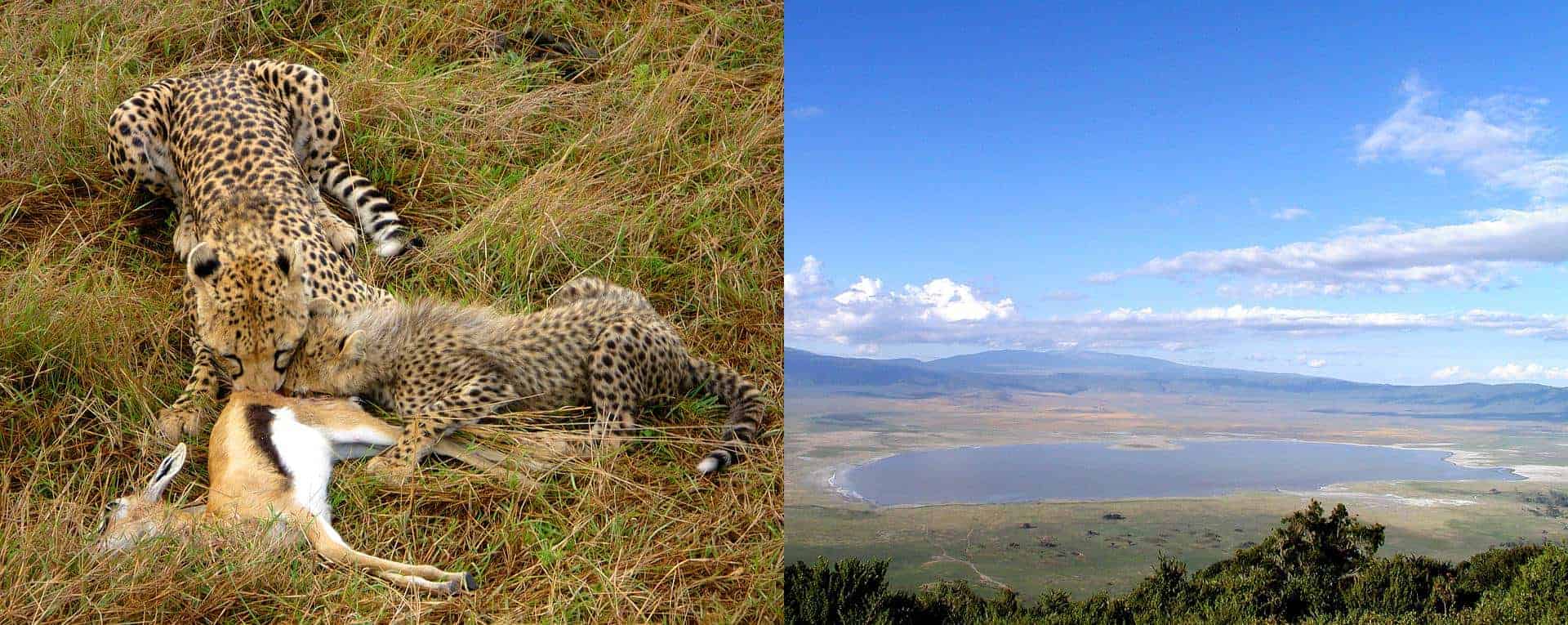
Many trails cross the crater floor, all guarded by rangers to protect the rare black rhino whose spiked horns are worth thousands of dollars to would-be poachers. Rounding central Lake Magadi, you may see thousands of migratory lesser flamingos on the salt-encrusted shallows, together with hundreds of small, stilt-legged kittlitz's plover and other wading birds.
On you go, through the Lerai Forest, frequented by armored rhino and wrinkled-skinned solitary male elephants carrying enormous tusks of ivory. You may meet a graceful leopard coming down a tree or a troupe of inquisitive vervet monkeys. Be careful. Ubiquitous olive baboons have learned to take advantage of visiting enthusiasts and can be very aggressive thieves. The South East slopes of the crater rim catch moist air from the distant coast.
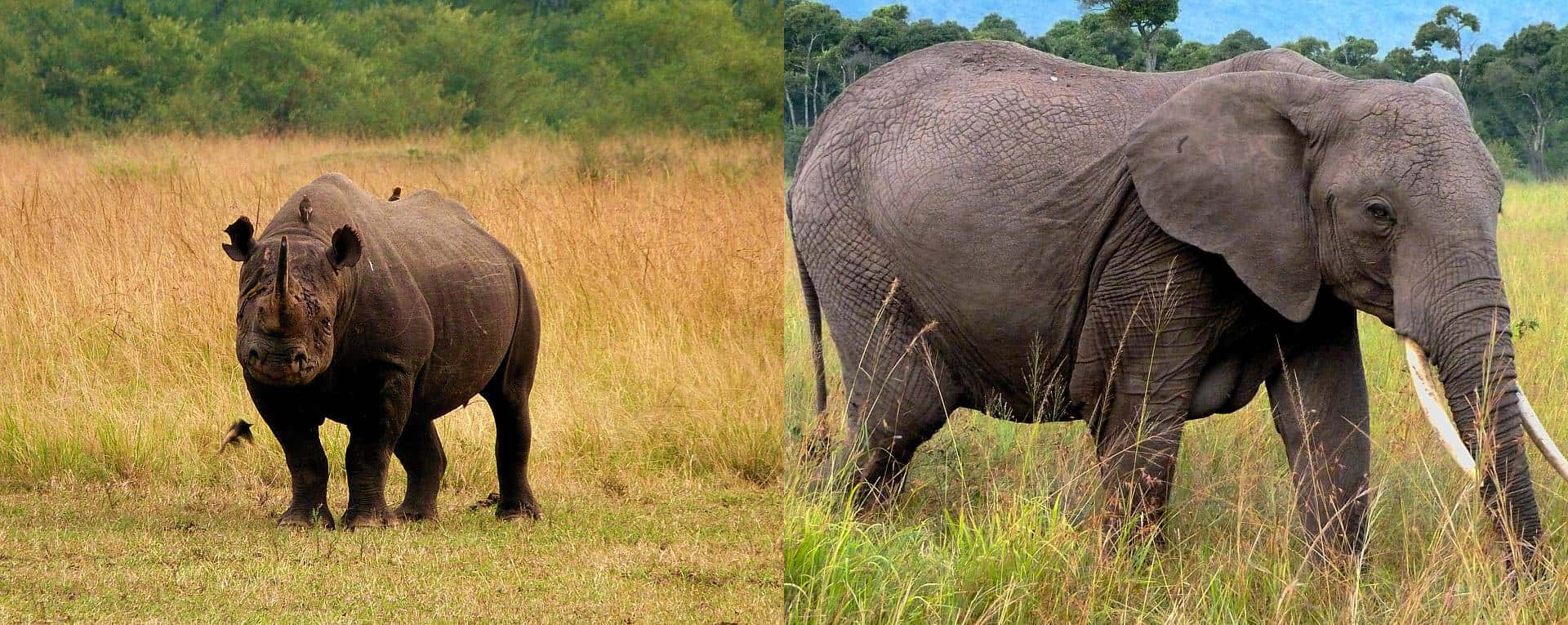
This cascades as mist down through tropical forest which is festooned with orchids, lichens, and mosses and alive with insect life which, in turn, attracts a luxuriant variety of insectivorous small mammals, birds and reptiles. Crossing grasslands towards the picnic area at Ngoitokitok Springs, there is a good chance of encountering a battle-scarred rhino or buffalo seeking forest shade, or several of the distinctive pride of black-maned, sometimes crook-tailed, inbred Tokitok lions.
High-shouldered spotted hyenas may be seen cooling themselves in muddy puddles as you approach the Gorigor Swamp, where pods of hippopotamus wallow by day, apparently harmless tubbies with tiny trumpet ears which they shake vigorously as they surface, displacing mats of thick, green water weeds and lilies. But beware, towards evening they emerge to graze on land, and woe betide the unfortunate voyeur who gets between them and their homely swamp.
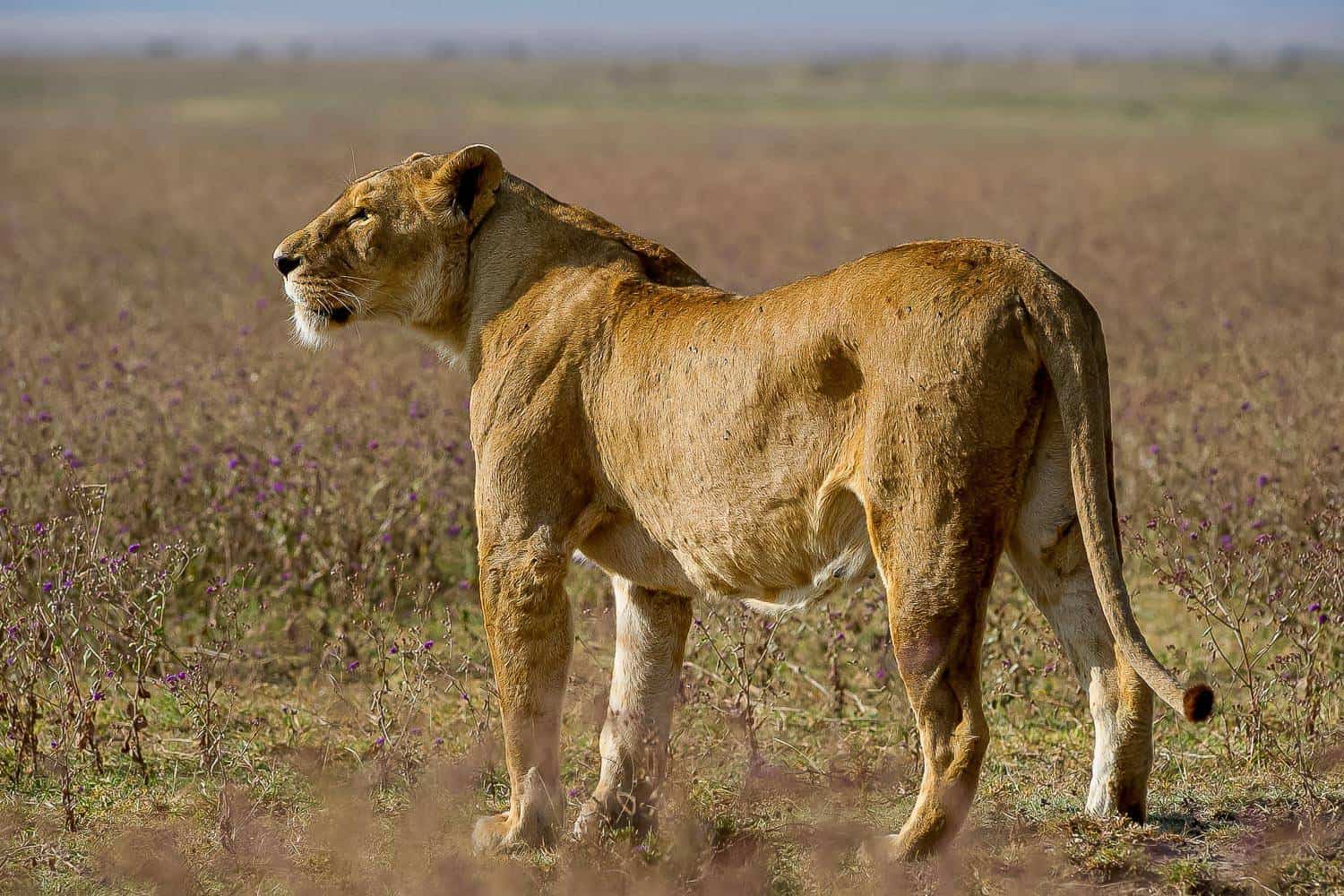
Hippopotamus and buffalo are the most notorious killers in the crater, feared by all, including lions, which do not generally confront a hippo, and are often intimidated by advancing buffalo males if they dare to hunt one of their numbers (read more on the best time to visit Ngorongoro).
Smaller mammals, visible when grass is shorter in the dry season, include banded and dwarf mongooses, standing guard, erect on their back legs. Cat-like serval, caracal, and spotted civet, with its air of perpetual surprise, are all present in the crater, together with handsome nocturnal bat-eared fox and black-backed jackal, looking as if a small, black blanket has been thrown over it from the shoulders to hang down as a long, thick tail.
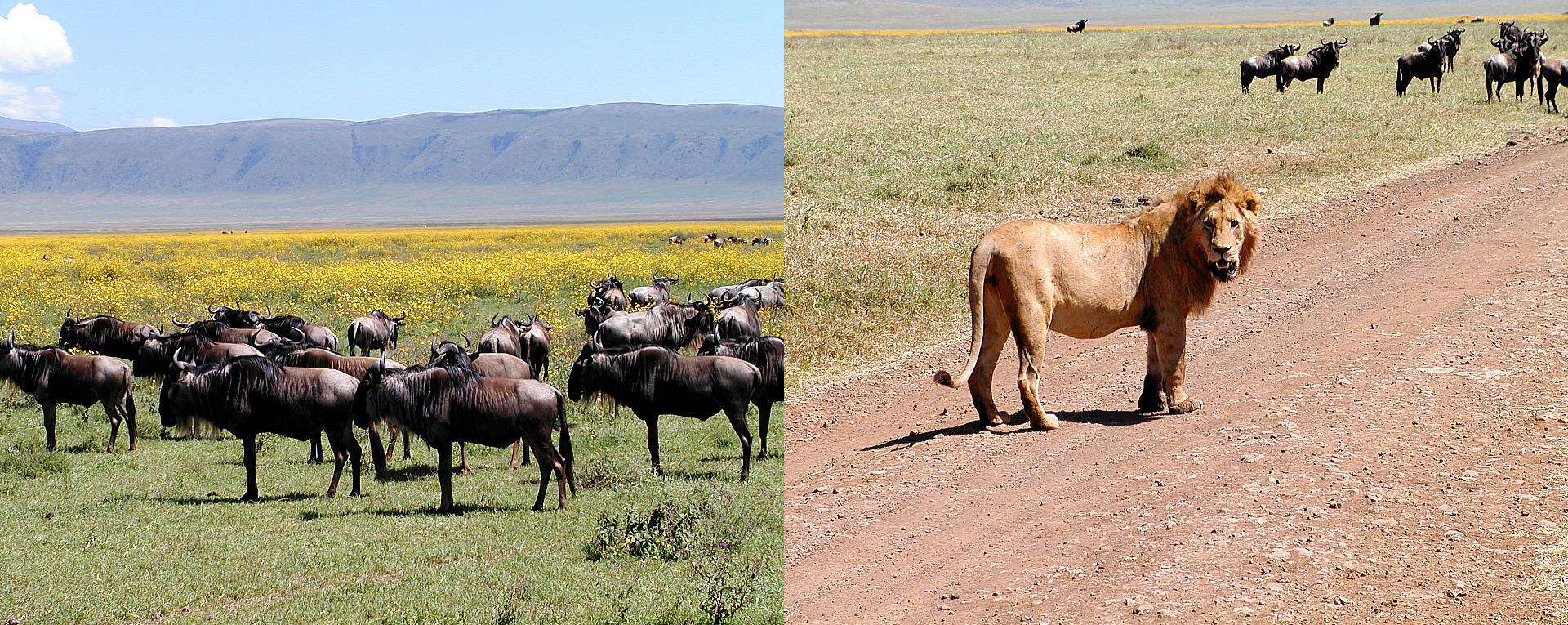
You may even spot a wahlberg's epauletted fruit bat hanging from an acacia branch, protected from the sun by its folded leathery wings, or a leopard tortoise plodding patiently across the dusty track. You won’t find oribi, impala, topi, oryx, giraffe and crocodile inside the crater, where their preferred food or habitat is hard to find, but almost every other mammal to be seen when traveling in East and Southern Africa is represented among the permanent populations.
You may find them outside the crater – in the conservation area of Ngorongoro – part of the Serengeti ecosystem. An incredible number of birds inhabit the crater. Flightless ostriches lumber across the grasslands and ponderous kori bustards somehow lift their clumsy bodies into the air. The hildebrandt's francolin, a relative of the pheasant, is also to be found here together with over 500 species, treasured for their beauty, their song, their courting activities or their bizarre appearance.
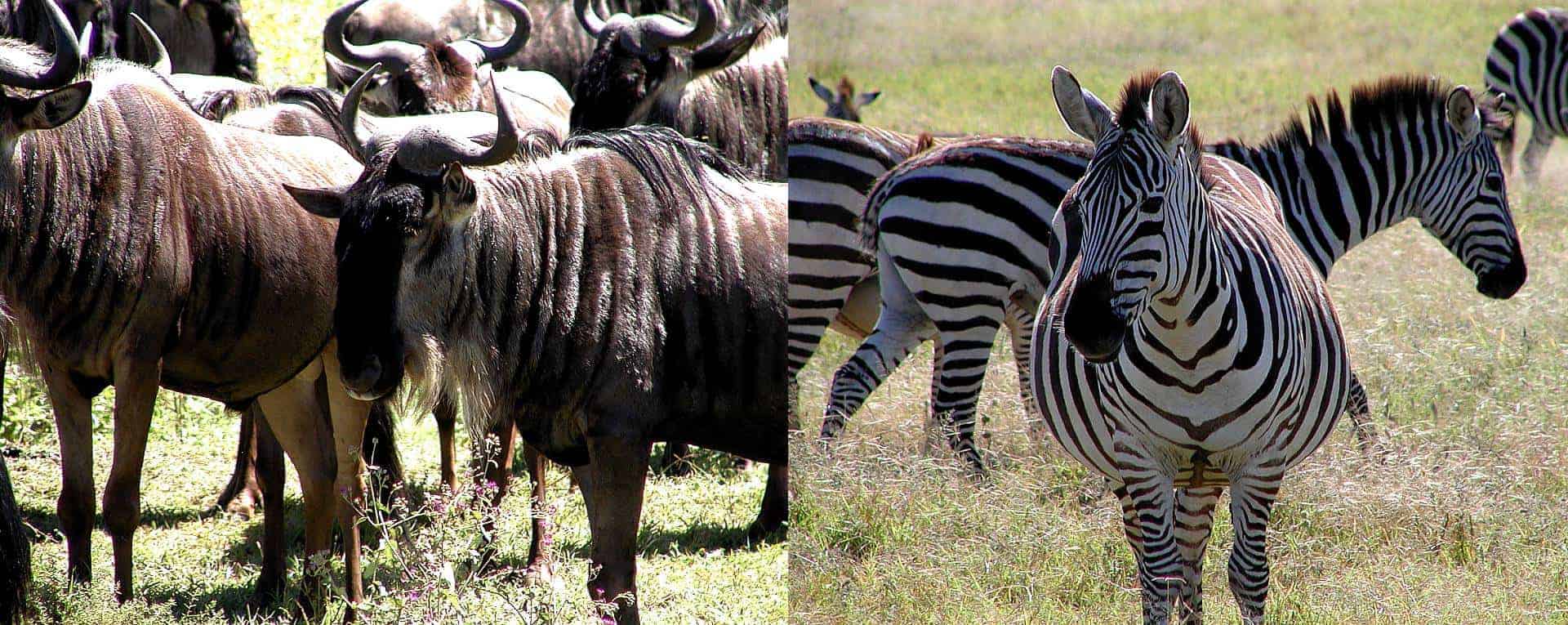
There is so much to see on your AfricanMecca tour of Ngorongoro Crater that the unregulated six-hour slot allotted to every visitor is crammed with spectacle and wonderful photographic subjects as well as the unexpected action that may be triggered at any time to render your dream holiday in Africa an unforgettable experience.
Although your time is justifiably limited in order to protect the fragile ecological balance and allow the maximum number of visitors to enjoy its unique character, you are guaranteed a memorable and deeply satisfying Ngorongoro Conservation Area and Crater safari.
Read More +
GUIDE ON NGORONGORO
Sited in the Great Rift Valley in northern Tanzania, the Ngorongoro Conservation Area includes the wondrous Ngorongoro Crater, home to the densest concentration of wild animals in Africa.
Read More +
WHERE TO STAY IN NGORONGORO
There is a varied choice of accommodation for bush tours in Ngorongoro, depending on your taste. Each is unique, but experiences are determined by an inimitable system of AfricanMecca Safari Tiers.
Read More +
SAFARI & TOUR IN NGORONGORO
Ngorongoro Crater safari experiences revolve simultaneously around unforgettable wildlife viewing opportunities within a vast and varied ecosystem, rich with historical and cultural associations.
Read More +
BEST TIME TO VISIT NGORONGORO
Seasonal climate fluctuations, migration and breeding patterns influence your choice of the best time to visit the Ngorongoro. All seasons have their advantages; however, it depends on your special interests.
Read More +
NGORONGORO ATTRACTIONS
There are many memorable places to visit as part of your wholesome, ecological tour in Ngorongoro. Many attractions well worth visiting on your expedition are sited inside the crater but also outside.
Read More +
MAASAI TRIBE OF NGORONGORO
The iconic Maasai of the Ngorongoro and Serengeti wilderness have been herding their cattle for thousands of years. A proud, nomadic warrior race who count their wealth in cattle and children.
AFRICANMECCA REVIEWS
What are our Customers saying about us? READ MORE REVIEWS
Jambo Raza, The safari trip in Tanzania was terrific - Ngorongoro and Serengeti. Our guide, Rodgers is a gem - smart, funny, knowledgeable and always interested in us and our journey. Great guy. We would all recommend your group to our friends.
Robert J Hartman, Esq - Minnesota, United States
AfricanMecca's professionalism and care understands that what distinguishes Africa is its authenticity, the land, people and wildlife who do not share our world of fashion and fanfare that distinguish so many travel companies today.
Cyril Christo & Marie Wilkinson, Conservation Photographers, Authors & Wildlife Documentary Producers - USA
I can't thank AfricanMecca Safaris and everybody that I met as part of my African Safari enough for the most incredible and unforgettable vacation of my life. The lodge at Ngorongoro Crater and Kirawira Camp in the Serengeti were magnificent.
Dr Edda Gomez-Panzani - California, United States
I booked my safari holiday through AfricanMecca. They were the most helpful company I have ever dealt with and I work within the travel industry. I had the most amazing time. The holiday went as clockwork with no hitches anywhere.
Shelley Roberts - Hemel Hempstead, United Kingdom
The AfricanMecca Safari experience was great. All the connections were spot on and the lodges and camps were great - 1st class. The safaris were great with the time spent in Ngorongoro totally outstanding. We just totally loved it, a great experience.
Bruce and Susie Ironside - New Zealand
We took our decision on an extended and complex safari through AfricanMecca Safaris. They did a flawless job across the board. We traveled through Zanzibar (fantastic) Lake Manyara, Ngorongoro Crater, and Serengeti without a hitch.
Chris Traub - CEO, Strategic Executive Search (SES) Group - New York, United States
AfricanMecca Safaris created a remarkable honeymoon tailored to our interests and desires. The quality of service and delivery of experience was unsurpassed. I highly recommend AfricanMecca Safaris to honeymooners, families, or any traveler.
Noorin & Jason Nelson - Maryland, United States
Raza - I have to congratulate you. We had an absolutely wonderful trip - lifetime for me. All of your personnel in Africa were pleasant, positive. Ngorongoro Crater Lodge were incredibly beautiful and luxurious and Kusini Camp – Serengeti.
Mike and Ann Rosenblum - Illinois, United States
EAST AFRICA SAFARI BOOKING TRIP IDEA FOR NGORONGORO IN NORTHERN TANZANIA
When visiting Ngorongoro Crater Conservation Area, we recommend combining it with your Northern Tanzania safari to Tarangire, Lake Manyara and Serengeti (wildebeest migration). End your trip with a Swahili cultural tour and beach holiday in Zanzibar.
You may optionally extend out to offbeat parks in Southern and Western Tanzania such as Nyerere (Selous), Ruaha or Katavi ending with a chimpanzee trekking safari at Gombe or Mahale by the relaxing Lake Tanganyika.
NGORONGORO CRATER SAFARI & TOUR PLANNING DETAILS
Kickstart Your Safari Planning
ARE YOU PLANNING TO BOOK AN AFRICAN SAFARI TO NGORONGORO IN TANZANIA?
Do You Need Knowledgeable, Experienced & Specialist Guidance For Your Travels In Ngorongoro ? Let Us Help Plan Your Trip Itinerary Correctly
CONTACT AN AFRICA TRAVEL EXPERT ON NGORONGORO CRATERThe Highlands Ngorongoro
Ngorongoro HighlandsNgorongoro Crater Lodge
Ngorongoro CraterGibb’s Farm
Ngorongoro HighlandsThe Manor At Ngorongoro
Ngorongoro HighlandsNgorongoro Serena Lodge
Ngorongoro CraterLemala Ngorongoro
Ngorongoro CraterNeptune Ngorongoro Luxury Lodge
Ngorongoro HighlandsNgorongoro Farm House
Ngorongoro HighlandsPlantation Lodge
Ngorongoro HighlandsNgorongoro Sopa Lodge
Ngorongoro CraterKitela Lodge
Ngorongoro HighlandsTloma Lodge
Ngorongoro HighlandsEntamanu Ngorongoro
Ngorongoro Crater
EXPLORE MORE ON NGORONGORO CRATER IN TANZANIA
HAVE YOU VISITED NGORONGORO FOR AN AFRICA SAFARI IN TANZANIA?
Write A Travel Or Tourist Trip Review To Share Your Experiences
WRITE NGORONGORO REVIEWAMS BLOG
VIEW ALL -- 26 October 2017 by AfricanMecca Safaris, in Blog For AfricanMecca Safaris,Safari Planning Blog Posts - AfricanMecca Safaris
Baggage Guidance & Restrictions On Flying Safaris In Africa
Baggage Guidance & Restrictions On Flying Safaris In Africa Published By Afr...READ MORE + - 07 June 2017 by AfricanMecca Safaris, in Blog For AfricanMecca Safaris,Latest Kenya Blog Posts From AfricanMecca Safaris,Safari Planning Blog Posts - AfricanMecca Safaris
Masai Mara Horseback Riding Safari In Kenya With AfricanMecca
Masai Mara Horseback Riding Safari In Kenya Published By AfricanMecca Safaris | ...READ MORE + - 24 March 2017 by AfricanMecca Safaris, in Blog For AfricanMecca Safaris,Safari Planning Blog Posts - AfricanMecca Safaris
Times Square New York Hosts Kenya Tourism Board & Wilderness Safaris Meet Up
Times Square New York Hosts Kenya Tourism Board & Wilderness Safaris Meet Up...READ MORE +

